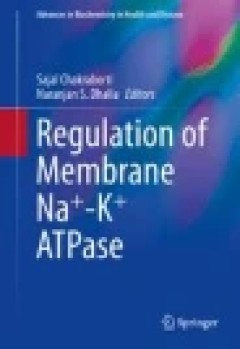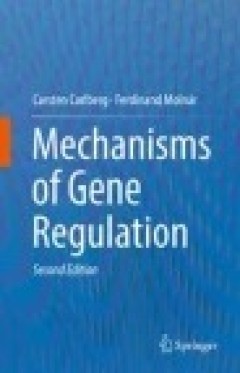Filter by
Regulation of Membrane Na+-K+ ATPase
Na+-K+ ATPase or Na-pump ATPase, a member of “P”-type ATPase superfamily, is characterized by association of multiple isoforms mainly of it’s α- and β- subunits. At present four different α- (α-1,α-2,α-3 and α-4) and three β- (β-1, β-2, and β-3) isoforms have been identified in mammalian cells and their differential expressions are tissue specific. Regulation of Na+-K+ ATPase a…
- Edition
- -
- ISBN/ISSN
- -
- Collation
- -
- Series Title
- -
- Call Number
- -

Regulation of Membrane Na+-K+ ATPase
Na+-K+ ATPase or Na-pump ATPase, a member of “P”-type ATPase superfamily, is characterized by association of multiple isoforms mainly of it’s α- and β- subunits. At present four different α- (α-1,α-2,α-3 and α-4) and three β- (β-1, β-2, and β-3) isoforms have been identified in mammalian cells and their differential expressions are tissue specific. Regulation of Na+-K+ ATPase a…
- Edition
- -
- ISBN/ISSN
- -
- Collation
- -
- Series Title
- -
- Call Number
- -
Regulation of Ca2+-ATPases,V-ATPases and F-ATPases
The biological membranes of cellular organization enfold an important group of membrane proteins called the ATPases, which are not only versatile in maintaining chemical gradient and electrical potential across the membrane but also bring metabolites necessary for cell metabolism and drive out toxins, waste products and solutes that otherwise can curb cell functions. ATPases are distributed vir…
- Edition
- -
- ISBN/ISSN
- -
- Collation
- -
- Series Title
- -
- Call Number
- -

Mechanisms of Gene Regulation
This textbook aims to describe the fascinating area of eukaryotic gene regulation for graduate students in all areas of the biomedical sciences. Gene expression is essential in shaping the various phenotypes of cells and tissues and as such, regulation of gene expression is a fundamental aspect of nearly all processes in physiology, both in healthy and in diseased states. This pivotal role for …
- Edition
- -
- ISBN/ISSN
- 978-94-017-7741-4
- Collation
- -
- Series Title
- -
- Call Number
- -
 Computer Science, Information & General Works
Computer Science, Information & General Works  Philosophy & Psychology
Philosophy & Psychology  Religion
Religion  Social Sciences
Social Sciences  Language
Language  Pure Science
Pure Science  Applied Sciences
Applied Sciences  Art & Recreation
Art & Recreation  Literature
Literature  History & Geography
History & Geography